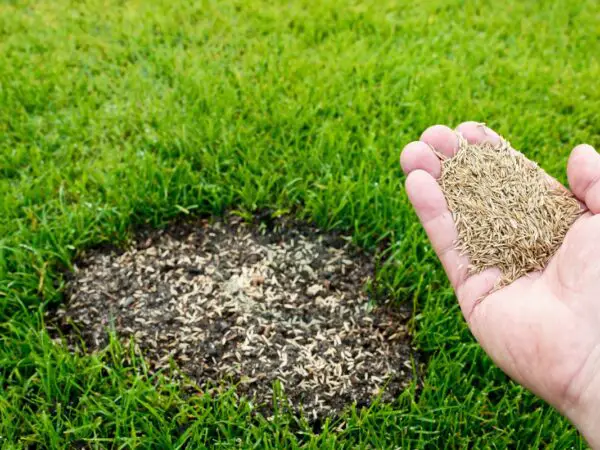Wondering about the best time to seed grass in fall? Planning your lawn care schedule just got easier. Discover the prime window for seeding your grass this autumn to ensure a lush, vibrant lawn come spring. Unveil expert tips and insights on maximizing growth potential and achieving that coveted green carpet effect in your yard. Stay ahead of the game with our comprehensive guide on seeding grass during the fall season for proper timing and lawn care.
Key Takeaways
- Plan Ahead: Start preparing your lawn for fall seeding by addressing any issues and following proper lawn care practices in advance.
- Timing is Key: Understand the optimal time for seeding grass in the fall to maximize growth and establishment before winter.
- Consider Fall over Spring: Fall seeding offers benefits like cooler temperatures, less competition from weeds, and higher success rates compared to spring seeding.
- Monitor Progress: Set realistic expectations for your new grass and regularly check its growth to ensure proper care and maintenance.
- Maximize Success: To increase the chances of successful seeding, focus on proper lawn preparation, choosing the right grass seed, and providing adequate watering and nutrients.
- Address Issues Promptly: If you encounter any problems with your new grass, take immediate action to address them and prevent further damage.
Fall Seeding Benefits
Cooler Temperatures
Adjust your seeding schedule to match the cooler temperatures of fall for optimal grass growth. With milder weather, cool seeds can establish roots without the stress of intense heat. The ideal temperature range for seed germination in the fall typically falls between 50-65 degrees Fahrenheit.
Increased Moisture
Take advantage of natural rainfall during the fall season to provide essential moisture for seed germination and growth. Higher humidity levels in autumn create a conducive environment for seeds to establish and thrive. Proper moisture retention in the soil is crucial during fall seeding to support healthy grass development.
Root Development
Emphasize promoting strong root development when seeding grass in the fall to ensure robust and healthy growth. By establishing deep roots, your grass will be better equipped to withstand harsh winter conditions. Fall seeding offers significant benefits by encouraging the growth of resilient root systems.
Lawn Preparation Steps
Soil Preparation
Prepare soil by aerating and removing debris for optimal seed contact. Importance of soil testing before seeding to ensure proper nutrients. Enhancing soil structure to support seed germination and growth.
Choosing Seed
Select cool-season grass varieties suitable for fall planting. Consider factors like shade tolerance and maintenance requirements when choosing seed. Understanding different grass species and their adaptability to your region.
Seeding Techniques
Implement proper seeding techniques such as overseeding or slit-seeding. Ensure even seed distribution for uniform grass coverage. Depth and spacing considerations for effective seeding results.
Timing Considerations
Climate Factors
Consider local climate conditions when planning fall seeding. Adapt seeding strategies based on temperature fluctuations in your area. In colder regions, aim to seed grass before the first frost hits to ensure optimal growth.
Climate variations significantly impact grass growth and establishment. Warmer climates may have a longer growing season, allowing for later seeding dates compared to cooler regions. Understanding these nuances is crucial for successful fall seeding.
Grass Types
Identify warm-season versus cool-season grass types for fall seeding. Cool-season grasses like fescue and bluegrass thrive in cooler temperatures, making them ideal for autumn planting. Warm-season varieties such as Bermuda grass are better suited for warmer climates.
Popular grass species like Kentucky bluegrass offer benefits such as durability and a lush appearance. Matching the right grass type to your lawn's specific needs and environmental conditions ensures healthy growth and minimal maintenance requirements.
Maintenance Needs
Outline post-seeding maintenance tasks like watering and mowing schedules diligently. Proper care is essential to support new seedlings' growth and development effectively. Adjusting maintenance practices based on the grass type and local climate promotes long-term lawn health.
Regular watering is critical immediately after seeding to keep the soil moist but not waterlogged. Mow newly seeded areas carefully once the grass reaches an appropriate height, ensuring not to stress the young plants unnecessarily.
Fall vs Spring Seeding
Advantages of Fall
Fall seeding offers numerous benefits that make it a preferred time for seeding grass over other seasons. One significant advantage is the reduced weed competition during fall, allowing newly seeded grass to establish more effectively. The cooler temperatures in fall result in less water evaporation, ensuring that the seeds receive adequate moisture for germination.
Establishing a healthy lawn is often easier during the fall season due to various factors. The soil remains warm enough for seed germination while experiencing cooler air temperatures, creating an ideal environment for grass growth. Moreover, pests and diseases are less active in fall, reducing the risk of damage to newly seeded areas.
Benefits of Spring
While fall seeding has its advantages, spring seeding also offers unique benefits that cater to specific preferences and conditions. Compared to fall seeding, spring seeding allows for quicker establishment of grass due to warmer soil temperatures and longer daylight hours. Some homeowners prefer spring seeding as it provides a fresh start after winter dormancy.
Spring seeding may be favored by those looking for immediate results or addressing bare patches caused by winter damage or heavy foot traffic. Despite its challenges such as increased weed competition and higher water requirements, proper planning and maintenance can lead to successful spring lawn establishment.
Optimal Seeding Time
Understanding Timing
Timing plays a crucial role in the success of grass seeding, especially in the fall. Weather patterns and frost dates significantly impact the optimal time for seeding grass during this season.
Factors such as temperature fluctuations and moisture levels influence the ideal window for fall seeding, varying across different regions. For instance, areas with milder climates may have a longer seeding period compared to regions experiencing early frosts.
The timing of grass seed sowing directly affects germination rates and overall lawn health. By planting seeds at the right time, you can maximize germination success and establish a healthy lawn before winter sets in.
Fall Lawn Care
Seeding and Fertilizing
Coordinating seeding with fertilization is crucial for enhanced grass growth in the fall season. Balancing nutrient requirements during the initial stages of seedling development is essential. Effective practices involve combining seeding and fertilizing activities strategically.
Incorporate fertilization practices to support healthy lawn growth post-seeding. Understand the significance of key nutrients like nitrogen, phosphorus, and potassium in nourishing lawns effectively. Sustain a balanced fertilizer regimen to promote long-term health for your lawn.
Addressing Lawn Issues
Fixing Patchy Areas
Strategies to address patchy areas involve targeted overseeding techniques. By focusing on specific sparse spots, you can ensure effective grass growth. Identifying the underlying causes of patchiness is crucial before beginning any reseeding efforts. This could include issues like poor soil quality or insufficient sunlight.
Tips on restoring uniformity in the lawn through focused patch repair methods are essential for a lush lawn. Implementing these strategies can help revitalize the overall appearance of your yard. Consider using high-quality seeds and proper watering techniques to encourage healthy growth.
Enhancing Thin Lawns
Techniques to thicken thin lawns often revolve around overseeding or renovation approaches. By introducing new grass seed into existing turf, you can promote denser coverage. Identifying factors contributing to thinning turfgrass density is key in addressing this issue effectively.
Implementing strategies post-seeding is vital for promoting denser turf growth. This may involve regular fertilization, adequate watering, and timely mowing practices. These steps are crucial for ensuring that newly seeded areas thrive and blend seamlessly with the existing lawn.
Expectations for New Grass
Growth Timeline
New grass growth follows a distinct timeline, starting with seed germination. The seeds will begin to sprout within 7-14 days, showcasing the initial signs of life. As the grass continues to grow, it reaches the established lawn stage in about 8-12 weeks.
During fall seeding, visible results typically appear within 2-3 weeks after sowing the seeds. At this point, you may notice tiny green shoots emerging from the soil, indicating successful germination and early growth. Over time, these seedlings develop into thicker grass blades that contribute to a lush lawn.
Throughout the post-seeding period, it's crucial to monitor various growth milestones to ensure optimal development. Keep an eye out for key indicators such as root establishment, which usually occurs around 4-6 weeks after seeding. Regular watering and fertilization play essential roles in supporting healthy growth and overall lawn establishment.
Maximizing Planting Success
Best Practices
To ensure successful fall grass seeding, follow essential best practices. Begin by preparing the soil adequately to provide a healthy foundation for the new grass. This involves removing any debris, weeds, and rocks from the area.
Incorporate expert tips into your seeding process. Consider overseeding existing lawns to fill in bare patches effectively. This method not only promotes denser grass coverage but also helps prevent weed growth.
Adhere to recommended guidelines for optimal results in establishing a thriving lawn. Ensure proper watering post-seeding; keep the soil consistently moist but not waterlogged. Apply a high-quality fertilizer suitable for new seedlings.
Remember that timing is crucial when planting grass seeds in the fall. The ideal window for seeding is typically between late August and mid-October when temperatures are cooler but still conducive to seed germination.
Summary
In summary, fall is the best time to seed your grass for a lush and healthy lawn. By understanding the benefits of fall seeding, preparing your lawn adequately, considering the timing, and addressing any issues, you set yourself up for success. Remember, fall seeding offers advantages over spring seeding and can lead to a more robust lawn in the long run. By following the optimal seeding time and caring for your lawn diligently, you can expect new grass to thrive and enhance your outdoor space. Maximize your planting success by implementing these tips and tricks for a vibrant and beautiful lawn.
Frequently Asked Questions
When is the best time to seed grass in the fall?
The optimal time for seeding grass in the fall is typically between late August and mid-October. This period allows the seeds to establish before winter while benefiting from cooler temperatures and higher moisture levels.
How does fall seeding benefit my lawn?
Fall seeding helps repair summer damage, promotes stronger root growth over winter, reduces weed competition, and results in a lush, healthy lawn come spring. It also maximizes germination rates due to favorable weather conditions.
Is there a difference between fall and spring seeding?
Fall seeding provides several advantages over spring seeding, such as lower competition from weeds, cooler temperatures ideal for seed establishment, and reduced water requirements due to higher natural precipitation levels.
What are some key steps for preparing my lawn for fall seeding?
To prepare your lawn effectively for fall seeding, ensure proper soil preparation by aerating and dethatching if necessary, remove debris or dead grass, adjust soil pH if needed, choose high-quality seeds suitable for your region's climate.
What should I expect after planting new grass in the fall?
After planting new grass in the fall, you can expect initial germination within 7-14 days under optimal conditions. The grass will continue growing throughout the season but may require light watering to ensure proper establishment until winter dormancy.
Image Source: Paid image from CANVA



